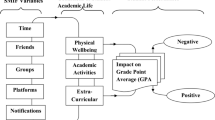Abstract
Using a 40-year (from 1975 to 2015) hiring dataset of 642 library and Information science (LIS) faculty members from 44 US universities, this research reveals the disciplinary characteristics of LIS through several key aspects including gender, rank, country, university, major, and research area. Results show that genders and ranks among LIS faculty members are evenly distributed; geographically, more than 90 % of LIS faculty members received doctoral degrees in the US; meanwhile, 60 % of LIS faculty received Ph.D. in LIS, followed by Computer Science and Education; in regards to research interests, Human–Computer interaction, Digital Librarianship, Knowledge Organization and Management, and Information Behavior are the most popular research areas among LIS faculty members. Through a series of dynamic analyses, this study shows that the educational background of LIS faculty members is becoming increasingly diverse; in addition, research areas such as Human–Computer interaction, Social Network Analysis, Services for Children and Youth, Information Literacy, Information Ethics and Policy, and Data and Text Mining, Natural Language Processing, Machine Learning have received an increasing popularity. Predictive analyses are performed to discover trends on majors and research areas. Results show that the growth rate of LIS faculty members is linearly distributed. In addition, among faculty member’s Ph.D. majors, the share of LIS is decreasing while that the share of Computer Science is growing; among faculty members’ research areas, the share of Human–Computer interaction is on the rise.










Similar content being viewed by others
References
Amir, R., & Knauff, M. (2008). Ranking economics departments worldwide on the basis of PhD placement. The Review of Economics and Statistics, 90(1), 185–190. doi:10.1162/rest.90.1.185.
Åström, F. (2007). Changes in the LIS research front: Time-sliced cocitation analyses of LIS journal articles, 1990–2004. Journal of the American Society for Information Science and Technology, 58(7), 947–957. doi:10.1002/asi.20567.
Barnett, G., Danowski, J., Feeley, T., & Stalker, J. (2010). Measuring quality in communication doctoral education using network analysis of faculty-hiring patterns. Journal of Communication, 60(2), 388–411. doi:10.1111/j.1460-2466.2010.01487.x.
Bobinski, G. S. (1986). Doctoral programs in library and information science in the United States and Canada. Library Trends, 34(4), 697–714.
Chronister, J. L., Gansneder, B. G., Baldwin, R. G., & Harper, E. P. (2001). Full-time women faculty off the tenure track: Profile and practice. The Review of Higher Education, 24(3), 237–257. doi:10.1353/rhe.2001.0003.
Ding, Y., Yan, E., Frazho, A., & Caverlee, J. (2009). PageRank for ranking authors in co-citation networks. Journal of the American Society for Information Science and Technology, 60(11), 2229–2243. doi:10.1002/asi.21171.
Fowler, J. H., Grofman, B., & Masuoka, N. (2007). Social networks in political science: Hiring and placement of Ph.D.s, 1960–2002. PS: Political Science and Politics, 40(4), 729–739. doi:10.1017/S104909650707117X.
Hanneman, R. A. (2001). The prestige of Ph. D. granting departments of sociology: A simple network approach. Connections, 24(1), 68–77.
Hargens, L. L., & Long, J. S. (2002). Demographic inertia and women’s representation among faculty in higher education. The Journal of Higher Education, 73(4), 494–517. doi:10.1353/jhe.2002.0037.
Katz, D. M., Gubler, J. R., Zelner, J., Bommarito, M. J, I. I., Provins, E., & Ingall, E. (2011). Reproduction of hierarchy? A social network analysis of the american law professoriate. Journal of Legal Education, 61(1), 76.
Marschke, R., Nielsen, J. M., & Rankin, P. (2007). Demographic inertia revisited: An immodest proposal to achieve equitable gender representation among faculty in higher education. The Journal of Higher Education, 78(1), 1–26. doi:10.1353/jhe.2007.0003.
Myers, S. A., Mucha, P. J., & Porter, M. A. (2011). Mathematical genealogy and department prestige. Chaos: An Interdisciplinary Journal of Nonlinear Science, 21(4), 041104. doi:10.1063/1.3668043.
Sugimoto, C. R., Li, D., Russell, T. G., Finlay, S. C., & Ding, Y. (2011a). The shifting sands of disciplinary development: Analyzing north american library and information science dissertations using latent dirichlet allocation. Journal of the American Society for Information Science and Technology, 62(1), 185–204. doi:10.1002/asi.21435.
Sugimoto, C. R., Ni, C., Russell, T. G., & Bychowski, B. (2011b). Academic genealogy as an indicator of interdisciplinarity: An examination of dissertation networks in library and information science. Journal of the American Society for Information Science and Technology, 62(9), 1808–1828. doi:10.1002/asi.21568.
Sugimoto, C. R., Russell, T. G., & Grant, S. (2009). Library and information science doctoral education: The landscape from 1930–2007. Journal of Education for Library and Information Science, 50(3), 190–202.
White, H. D., & McCain, K. W. (1998). Visualizing a discipline: An author co-citation analysis of information science, 1972–1995. Journal of the American Society for Information Science, 49(4), 327–355. doi:10.1002/(SICI)1097-4571(19980401)49:4<327:AID-ASI4>3.0.CO;2-4.
Yan, E. (2014). Topic-based pagerank: Toward a topic-level scientific evaluation. Scientometrics, 100(2), 407–437. doi:10.1007/s11192-014-1308-5.
Zhou, J., Zeng, A., Fan, Y., & Di, Z. (2016). Ranking scientific publications with similarity-preferential mechanism. Scientometrics, 106(2), 805–816. doi:10.1007/s11192-015-1805-1.
Zhu, Y., & Yan, E. (2015). Dynamic subfield analysis of disciplines: An examination of the trading impact and knowledge diffusion patterns of computer science. Scientometrics, 104(1), 335–359. doi:10.1007/s11192-015-1594-6.
Acknowledgments
This work was supported by the Ministry of Education of the Republic of Korea and the National Research Foundation of Korea (NRF-2015S1A3A2046711).
Author information
Authors and Affiliations
Corresponding author
Rights and permissions
About this article
Cite this article
Zhu, Y., Yan, E. & Song, M. Understanding the evolving academic landscape of library and information science through faculty hiring data. Scientometrics 108, 1461–1478 (2016). https://doi.org/10.1007/s11192-016-2033-z
Received:
Published:
Issue Date:
DOI: https://doi.org/10.1007/s11192-016-2033-z




